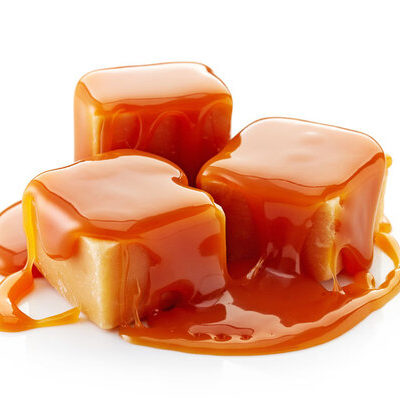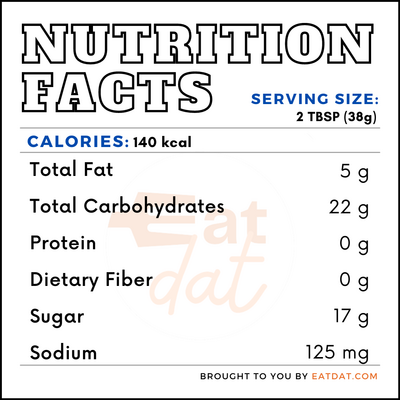
Caramel
What is Caramel?
Caramel is a type of confectionery made from sugar. The sugar is melted and heated at a low flame until it begins to caramelize, taking on a signature orangish-brown color. The basic version contains only sugar but this sweet may also be flavored with salt, orange, chocolate, nuts, rosewater, and many other flavors.
The top 10 most popular brands of this sweet are:
- St. Croix Chocolate Company
- Banyan Tree Chocolate
- Tandem Chocolates
- Delysia Chocolatier
- The Chocolate Fetish
- The Secret Chocolatier
- Zocalisa Fine Chocolates
- Theo Chocolate
- Hot Tempered Chocolates
- Sweet Jules Gifts
Origin of caramel
This was first discovered by Arabs in the 1st century AD. It was known as kurat al milh, and was an expensive and rare sweet. This food was a rare delicacy in Europe in the 16th century. However, both sugar and this sweet remained expensive until the 19th century, when sugarcane plantations were established in large numbers and the production of refined sugar increased. The name itself comes from the French word for the sweet, which is actually borrowed from the Spanish caramelo. It is possible that the Latin calamellus is derived from the Arab word for candy, kurat al milh.
Nutrition
Two tablespoons of caramel can contain:

This food is mainly composed of sugar, which can be good for the health of the brain, provided it is consumed in balanced quantities. The brain requires up to 400 calories of glucose per day to function. However, this sweet contains tagatose, which may lead to digestive issues. Overconsumption of sugary foods may lead to heart problems due to increased triglycerides and can damage oral health since sugar encourages bacteria in the mouth. This sweet, especially salted caramel, can also be highly addictive.
Commercial production
To make this sweet commercially, the main ingredients that may be used are sugar, starch syrup, fruit and berry preparations, fats, milk, nuts, honey, acids, as well as aromatic and coloring matter. First, the sugar is cooked to make a syrup, then starch syrup may be used for cooking the resulting mass. Then, the filling is cooked. After that, the sweet is crystallized sufficiently before cooling and packaging.
Both this sweet and its sauce may be stored in the refrigerator for up to one month. If frozen, it may even last for up to three months. It is important to keep the jar sealed and airtight for longer shelf life. Hard caramel can be stored in a dark and moisture-free place in airtight containers.
Caramel recipes
This sweet has a rich and sweet taste, which makes it ideal for using in desserts and drinks. Its sticky consistency can jazz up any dessert or sweet dish. Here are a few popular recipes:
- Salted Caramel Butter Bars
- Brownies
- Salted Caramel Shake
- Banana Cream Dessert
- Chocolate Caramel Cake
- Orange Pudding Cake
- Peach Caramels
- Peach Snickerdoodle Bars
- Bermuda Rum Cake
- Marzipan Easter Eggs
- Caramel Toffee Cookies
- Apple Dump Cake
- Apple Crisp
FDA regulations
According to the FDA, caramel falls under the generally recognized as safe category. It is defined as the dark-brown liquid or solid material resulting from the carefully controlled heat treatment of food-grade sugar. This food may be safely used for coloring foods.
References
Sengar, Garima, and Harish Kumar Sharma. “Food caramels: a review.” Journal of food science and technology vol. 51,9 (2014): 1686-96. doi:10.1007/s13197-012-0633-z, https://www.ncbi.nlm.nih.gov/pmc/articles/PMC4152495/
Saraiva, Ariana et al. “Natural Sweeteners: The Relevance of Food Naturalness for Consumers, Food Security Aspects, Sustainability and Health Impacts.” International journal of environmental research and public health vol. 17,17 6285. 28 Aug. 2020, doi:10.3390/ijerph17176285, https://www.ncbi.nlm.nih.gov/pmc/articles/PMC7504156/
David Joachim & Andrew Schloss, The Science of Caramel, Food Science, Fine Cooking #131, pp. 26-27, https://www.finecooking.com/article/the-science-of-caramel
The classical production of caramel, Baker Group, https://en.baker-group.net/confectionery-formulations-technology-raw-materials-and-ingredients/caramel/the-classical-production-of-caramel.html
